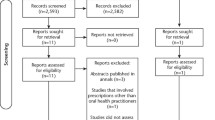Abstract
Aims This study aims to review ways in which UK and US practitioners manage post-operative dental pain following oral surgery procedures, focusing on the use of opioids in Boston, US and Birmingham, UK.
Methods An anonymous online questionnaire was distributed to clinicians from either Birmingham Dental Hospital, UK and Harvard School of Dental Medicine or Boston University School of Dental Medicine, US. They were invited to fill this out via email link or in person using a tablet provided. Information was collected regarding age, years of experience, area of practice, area of undergraduate training, gender and levels of oral surgery activity. Participants were presented with six clinical scenarios and asked to indicate how they would achieve post-operative analgesia for each.
Results A total of 44 responses were received, 22 from each city, including 27 males and 17 females. Fifty-five percent of respondents carried out at least ten weekly oral surgery procedures, with 52% having more than ten years' experience. Forty-one percent were aged greater than 40 years, with 32% less than 30. Boston dentists were 2.1 times (P = 0.016) more likely to opt for opioids than Birmingham dentists. Both cohorts were more likely to choose opioids for invasive surgeries involving flap procedures compared to simple extractions. Among the cases where UK respondents opted for opioids, codeine was chosen in 100% of cases compared to 9% for the US cohort, where the remainder chose more potent opioids (oxycodone, hydrocodone and tramadol).
Conclusions Results of this preliminary study show that Boston practitioners were likely to opt for opioids in a higher proportion of cases (19.84%) than Birmingham practitioners (9.42%). Reasons for the discrepancies could be related to how practitioners are trained, patient expectations on pain relief and health policy in the two countries. Dental prescriptions have contributed to the US opioid epidemic and their decreased use will be important in combatting the crisis.
Key points
-
Provides an insight into some of the current prescribing practices carried out following oral surgery procedures by Birmingham (UK) practitioners compared to Boston (US) practitioners.
-
Provides preliminary details into the different nature of opioids prescribed by practitioners in the two countries and reasons as to why they may differ.
-
Highlights different types of opioids that can be used in dentistry in other parts of the world and the multiple ways to achieve analgesia which may differ from common UK practices.
-
The reader gains knowledge about the opioid epidemic in the US and the role dentistry has to play in this as well as some of the ways dentists may be unknowingly contributing to the crisis.
This is a preview of subscription content, access via your institution
Access options
Subscribe to this journal
Receive 24 print issues and online access
$259.00 per year
only $10.79 per issue
Buy this article
- Purchase on Springer Link
- Instant access to full article PDF
Prices may be subject to local taxes which are calculated during checkout




Similar content being viewed by others
References
Becker D. Pain Management: Part 1: Managing Acute and Postoperative Dental Pain. Anaesth Prog 2010; 57: 67-79.
Donaldson M, Goodchild J H. Mitigating Post-Operative Dental Pain: as easy as 1, 2, 4, 24. Delaware J Pub Health 2017; 5357.
O'Neil M. The ADA Practical Guide to Substance Use Disorders and Safe Prescribing. New York, NY: John Wiley and Sons, 2015.
Sahu J. Role of pharmacological agents in pain management of dental patients. J Adv Med Dent Sci Res 2016; 4: 132-135.
Moore P, Ziegler K, Lipman R, Aminoshariae A, Carrasco-Labra A, Mariotti A. Benefits and harms associated with analgesic medications used in the management of acute dental pain. J Am Dent Assoc 2018; 149: 256-265.
Thornhill M, Suda K, Durkin M, Lockhart P. Is it time US dentistry ended its opioid dependence? J Am Dent Assoc 2019; 150: 883-889.
Hancocks S. The opioid crisis in the USA. Br Dent J 2019; 226: 815-815.
Suda K, Durkin M, Calip G et al. Comparison of Opioid Prescribing by Dentists in the United States and England. JAMA Network Open 2019; 2: e194303.
Schroeder A R, Dehghan M, Newman T B, Bentley J P, Park K T. Association of opioid prescriptions from dental clinicians for US adolescents and young adults with subsequent opioid use and abuse. JAMA Intern Med. 2019; 179: 145-152.
Keith D, Shannon T, Kulich R. The prescription monitoring programme data. J Am Dent Assoc 2018; 149: 266-272.
Moore P, Dionne R, Cooper S, Hersh E. Why do we prescribe Vicodin?. J Am Dent Assoc 2016; 147: 530-533.
Reynolds W, Schwarz E. Dentists' Current and Optimal Opioid Prescribing Practices: A Proactive Review. MO Med 2019; 116: 347-350.
Contreras O A, Stewart D, Valachovic R W. The Role of Dental Education in the Prevention of Opioid Prescription Drug Misuse. 2019. Available at https://www.adea.org/policy/white-papers/preventing-opioid-prescription-drug-misuse.aspx (accessed October 2020).
Lembke A. Why Doctors Prescribe Opioids to Known Opioid Abusers. New Engl J Med 2013; 368: 484-485.
American Dental Association. Substance Use Disorders. 2019. Available at https://www.ada.org/en/advocacy/current-policies/substance-use-disorders (accessed October 2020).
Centers for Disease Control and Prevention. Guideline for Prescribing Opioids for Chronic Pain. 2019. Available at https://www.cdc.gov/drugoverdose/prescribing/guideline.html (accessed October 2020).
Scottish Dental Clinical Effectiveness Program(SDCEP). Drug Prescribing for Dentistry: Dental Clinical Guidance. 3rd ed. Dundee, UK: Scottish Dental Clinical Effectiveness Program, 2016.
NICE. Analgesics. 2019. Available at https://bnf.nice.org.uk/treatment-summary/analgesics.html (accessed October 2020).
NICE. Dental Practitioners' Formulary. 2019. Available at https://bnf.nice.org.uk/dental-practitioners-formulary/ (accessed October 2020).
Author information
Authors and Affiliations
Corresponding author
Rights and permissions
About this article
Cite this article
Tayara, S., Ahmed, B. Opioids in oral surgery: preliminary findings between Birmingham, UK and Boston, US. Br Dent J 230, 159–164 (2021). https://doi.org/10.1038/s41415-020-2347-3
Received:
Accepted:
Published:
Issue Date:
DOI: https://doi.org/10.1038/s41415-020-2347-3
This article is cited by
-
Analgetika in der Zahnmedizin
wissen kompakt (2023)


